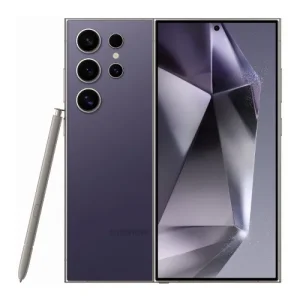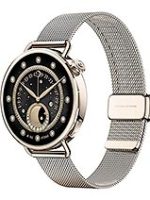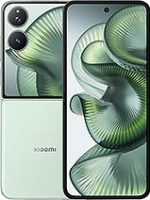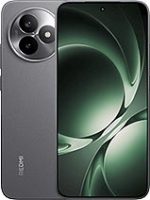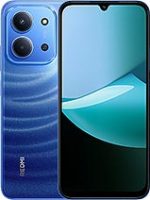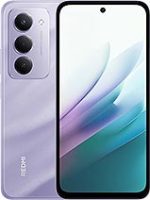Google Pixel 9 Pro Ultra vs Samsung Galaxy S25 Ultra
The Android summit has two new peaks Google Pixel 9 Pro Ultra vs Samsung Galaxy S25 Ultra . The AI-specialized Google Pixel 9 Pro Ultra faces the specification titan Samsung Galaxy S25 Ultra. This clash isn’t just about raw power. It is a fundamental choice about your smartphone’s intelligence. Do you want a device that thinks, or a device that dominates? Let’s dissect this ultimate Android rivalry.
Design Philosophy: Minimalist Elegance vs. Utilitarian Power
First, their designs tell different stories. The Pixel 9 Pro Ultra likely continues Google’s minimalist language. Expect a polished camera bar. It will feel sleek and modern. Furthermore, its build quality should be exceptional. The focus is on comfortable, elegant handling.
Conversely, the Samsung Galaxy S25 Ultra will assert its dominance. It will probably feature a squared-off, industrial design. Moreover, it includes the iconic built-in S-Pen. This is a tool for creators and note-takers. Therefore, its design prioritizes function and precision. It is a device built for productivity.
Design Advantage: Tie
The winner depends on your style. Choose the Pixel for minimalist elegance. Pick the Samsung for utilitarian power and its unique S-Pen.
Display Showdown: Visual Brilliance Compared
Both phones will have stunning screens. The Samsung Galaxy S25 Ultra will likely boast the brightest display. Its Dynamic AMOLED 2X panel will be incredibly vibrant. Furthermore, it will maintain a silky 120Hz refresh rate. It is a benchmark for visual excellence.
However, the Google Pixel 9 Pro Ultra will not be far behind. Its Super Actua display will promise exceptional brightness. It will also feature a smooth 120Hz LTPO panel. Consequently, outdoor visibility will be superb on both devices. The difference may be negligible for most users.
Display Advantage: Samsung Galaxy S25 Ultra (Slight)
Samsung consistently sets the bar for display technology. Expect it to have a slight edge in peak brightness and color calibration.
Performance & AI: Raw Power Meets Computational Genius
Under the hood, philosophies diverge sharply. The S25 Ultra will be a raw performance beast. It will likely use the next-generation Snapdragon 8 Gen 4 or an Exynos chip. This means blistering speeds for gaming and multitasking.
The Pixel 9 Pro Ultra will harness the power of Google Tensor G4. This chip is not just about speed. Instead, it focuses on AI and machine learning. Therefore, it will enable revolutionary features. Think of advanced Magic Eraser, real-time video enhancements, and more.
Performance Advantage: Tie
For pure gaming power, the S25 Ultra might lead. For intelligent, on-device AI features that simplify your life, the Pixel 9 Pro Ultra will be unmatched.
Camera System: Computational Photography vs. Hardware Versatility
This is the marquee battle. The Pixel 9 Pro Ultra will rely on Google’s legendary computational photography. Its software will create stunning images from any sensor. Night Sight and Portrait Mode will be industry-leading. Photos will look amazing with minimal effort.
The Samsung Galaxy S25 Ultra will counter with sheer hardware power. It will likely feature a staggering 200MP main sensor. Additionally, it will include a powerful periscope telephoto lens. So, its optical zoom capabilities will be superior. You will capture details the Pixel cannot reach physically.
Camera Advantage: Tie
For point-and-shoot perfection and low-light magic, the Pixel wins. For ultimate zoom range and detail capture, the Samsung reigns supreme.
Battery & Software: All-Day Endurance and Smart Assistance
Battery life will be critical. The S25 Ultra will pack a massive cell. It will easily deliver one and a half days of power. Furthermore, its 45W+ charging will be reliably fast.
The Pixel 9 Pro Ultra will have a large battery optimized by the efficient Tensor chip. It will also last all day. However, its charging speeds have historically been more conservative. Google’s Adaptive Battery technology will intelligently manage power.
On software, both run Android but with different skins. Samsung’s One UI is feature-packed. Meanwhile, Google’s pure Android offers a clean, bloat-free experience with the latest AI integrations.
Battery Advantage: Samsung Galaxy S25 Ultra
For the largest battery and faster wired charging, the S25 Ultra has the edge.
The Final Verdict: Your Choice, Your Philosophy
Your decision defines your needs. Choose your champion wisely.
Choose the Google Pixel 9 Pro Ultra if: You want the smartest camera. You love AI-powered features that feel like magic. Furthermore, you prefer a clean, minimalist Android experience. You are a photographer who values computational artistry.
Choose the Samsung Galaxy S25 Ultra if: You need the ultimate hardware. You use the S-Pen for work or creativity. Moreover, you are a mobile gamer who demands peak performance. You want the longest possible battery life and the most versatile zoom camera.
Ultimately, the Pixel 9 Pro Ultra is an intelligent assistant. The Galaxy S25 Ultra is a power tool. Which one fits your hand?
Want to explore more tech comparisons and reviews? Check out our full catalog of articles for the latest insights: Read more at TechieDeck
NETWORK
| Technology | GSM / CDMA / HSPA / EVDO / LTE / 5G GSM / HSPA / LTE / 5G |
| 2G bands | GSM 850 / 900 / 1800 / 1900 |
| 3G bands | HSDPA 800 / 850 / 900 / 1700(AWS) / 1900 / 2100 |
| 4G bands | 1, 2, 3, 4, 5, 7, 8, 12, 13, 14, 17, 18, 19, 20, 25, 26, 28, 29, 30, 38, 40, 41, 48, 66, 71 - GGX8B |
| 5G bands | 1, 2, 3, 5, 7, 8, 12, 14, 20, 25, 26, 28, 29, 30, 38, 40, 41, 48, 66, 70, 71, 77, 78, 258, 260, 261 SA/NSA/Sub6/mmWave - GGX8B |
| Speed | HSPA, LTE (CA), 5G |
LAUNCH
| Announced | 2025, January 22 2024, August 13 |
| Status | Available Available |
| Released | Released 2025, February 03 Available. Released 2024, August 22 |
BODY
| Dimensions | 162.8 x 77.6 x 8.2 mm (6.41 x 3.06 x 0.32 in) 162.8 x 76.6 x 8.5 mm (6.41 x 3.02 x 0.33 in) |
| Weight | 218 g (7.69 oz) 221 g (7.80 oz) |
| Build |
Glass front (Corning Gorilla Armor 2), glass back (Corning Gorilla Armor 2), titanium frame (grade 5)
Glass front (Gorilla Glass Victus 2), glass back (Gorilla Glass Victus 2), aluminum frame IP68 dust tight and water resistant (immersible up to 1.5m for 30 min) |
| SIM SIM (Subscriber Identity Module) is a small card that contains mobile network subscriber's account information. This allows the phone using the card to attach to a mobile network. The SIM card is most commonly associated with GSM and UMTS mobile networks. Moving a SIM card from one phone to another allows a subscriber to switch mobile phones without having to contact their mobile network carrier. SIM cards can also be used by a phone to store limited amounts of data, such as phone numbers and text messages. | Nano-SIM + Nano-SIM + eSIM + eSIM (max 2 at a time) - INT Nano-SIM + eSIM |
DISPLAY
| Type Design Type called form factor refers to a mobile phone's size, shape, and style as well as the layout and position of major components of phone. There are three major form factors seen in mobile phones => bar phones, folding phones and sliding phones. | Dynamic LTPO AMOLED 2X, 120Hz, HDR10+, 2600 nits (peak) LTPO OLED, 120Hz, HDR10+, 2000 nits (HBM), 3000 nits (peak) |
| Size | 6.9 inches, 116.9 cm2 (~92.5% screen-to-body ratio) 6.8 inches, 109.7 cm2 (~88.0% screen-to-body ratio) |
| Resolution | 1440 x 3120 pixels, 19.5:9 ratio (~498 ppi density) 1344 x 2992 pixels, 20:9 ratio (~486 ppi density) |
| Protection | Corning Gorilla Armor 2 Corning Gorilla Glass Victus 2, Mohs level 4 |
PLATFORM
| OS | Android 15, up to 7 major Android upgrades, One UI 7 Android 14, upgradable to Android 16, up to 7 major Android upgrades |
| Chipset Chipset is a group of integrated circuits designed to perform one or a more dedicated functions, often with real time computing constraints, Popular smartphones are equipped with more advanced embedded chipsets that can do many different tasks depending on their programming. | Qualcomm SM8750-AB Snapdragon 8 Elite (3 nm) Google Tensor G4 (4 nm) |
| CPU CPU (Central Processing Unit) mostly known as processors, CPU processes instructions in order to carry out certain functions that make your device operate properly. Processors are often described as the brain of computers, smartphones and tablets, Smartphones and tablets rely on processors to carry out their every task, Processors are an incredibly important factor in selecting any type of computing device, including your smartphone. | Octa-core (2x4.47 GHz Oryon V2 Phoenix L + 6x3.53 GHz Oryon V2 Phoenix M) Octa-core (1x3.1 GHz Cortex-X4 & 3x2.6 GHz Cortex-A720 & 4x1.92 GHz Cortex-A520) |
| GPU GPU (Graphics Processing Unit) is a single-chip processor designed to rapidly manipulate and alter memory to accelerate the creation of images in a frame buffer intended for output to a display, This includes things such as lighting effects, object transformations, and 3D motion. | Adreno 830 Mali-G715 MC7 |
MEMORY
| Card slot | No No |
| Internal Storage Internal Storage is a data storage space (flash memory) mostly used in smartphones, tablets and other electronic devices where operating system, apps, music, photos, videos, files and other user data Is stored. | 256GB 12GB RAM, 512GB 12GB RAM, 1TB 12GB RAM, 1TB 16GB RAM 128GB 16GB RAM, 256GB 16GB RAM, 512GB 16GB RAM, 1TB 16GB RAM |
MAIN CAMERA
| Triple |
50 MP, f/1.7, 25mm (wide), 1/1.31", 1.2µm, dual pixel PDAF, OIS 48 MP, f/2.8, 113mm (periscope telephoto), 1/2.55", dual pixel PDAF, OIS, 5x optical zoom 48 MP, f/1.7, 123˚ (ultrawide), 1/2.55", dual pixel PDAF, |
| Quad |
200 MP, f/1.7, 24mm (wide), 1/1.3", 0.6µm, multi-directional PDAF, OIS 10 MP, f/2.4, 67mm (telephoto), 1/3.52", 1.12µm, PDAF, OIS, 3x optical zoom 50 MP, f/3.4, 111mm (periscope telephoto), 1/2.52", 0.7µm, PDAF, OIS, 5x optical zoom 50 MP, f/1.9, 120˚ (ultrawide), 0.7µm, dual pixel PDAF, Super Steady video |
| Features | Laser AF, Best Face, LED flash, auto-HDR, panorama Multi-zone Laser AF, LED flash, Pixel Shift, Ultra-HDR, panorama, Best Take, Zoom Enhance |
| Video | 8K@24/30fps, 4K@30/60/120fps, 1080p@30/60/240fps, 10-bit HDR, HDR10+, stereo sound rec., gyro-EIS 4K@30/60fps, 1080p@30/60fps |
SELFIE CAMERA
| Single Front Camera | 12 MP, f/2.2, 26mm (wide), 1/3.2", 1.12µm, dual pixel PDAF 42 MP, f/2.2, 17mm (ultrawide), PDAF |
| Features | HDR, HDR10+ HDR, panorama |
| Video | 4K@30/60fps, 1080p@30fps 4K@30/60fps, 1080p@30/60fps |
| Front Flash Flash Light => There is commonly two types of flash lights are used in camera mobile phones, LED Flash (LED flash offers lower power consumption with drive circuitry that takes up very little room, LEDs can be strobed faster than any other light source), Xenon Flash (xenon flash produces an extremely intense full-spectrum white light for a very short duration) |
SOUND
| Loudspeaker | Yes Yes, with stereo speakers |
| 3.5mm jack | No No |
COMMS
| WLAN | Wi-Fi 802.11 a/b/g/n/ac/6e/7, tri-band, Wi-Fi Direct Wi-Fi 802.11 a/b/g/n/ac/6e/7, tri-band |
| Bluetooth | 5.4, A2DP, LE 5.3, A2DP, LE, aptX HD |
| GPS GPS The Global Positioning System is a satellite-based radio navigation system, GPS permits users to determine their position, velocity and the time 24 hours a day, in all weather, anywhere in the world, In order to locate your position, your device or GPS receiver must have a clear view of the sky. | GPS, GLONASS, BDS, GALILEO, QZSS GPS (L1+L5), GLONASS, GALILEO, BDS, QZSS, NavIC |
| NFC NFC (Near field communication) is a set of standards for smartphones and similar devices to establish peer-to-peer radio communications with each other by touching them together or bringing them into proximity, usually no more than a few inches. | Yes Yes |
| Infrared port | No Not found |
| Radio | No No |
| USB | USB Type-C 3.2, DisplayPort 1.2, OTG USB Type-C 3.2 |
FEATURES
| Sensors Sensors are electronic components that detects and responds to some type of input from the physical environment. The specific input could be light, heat, motion, moisture, pressure and location, The output is generally a signal that is converted to use in computing systems, a location sensor, such as a GPS receiver is able to detect current location of your electronic device. | Fingerprint (under display, ultrasonic), accelerometer, gyro, proximity, compass, barometer, Samsung Wireless DeX Fingerprint (under display, ultrasonic), accelerometer, gyro, proximity, compass, barometer, thermometer (skin temperature) |
BATTERY
| Type Design Type called form factor refers to a mobile phone's size, shape, and style as well as the layout and position of major components of phone. There are three major form factors seen in mobile phones => bar phones, folding phones and sliding phones. | Li-Ion 5000 mAh Li-Ion 5060 mAh |
| Charging |
45W wired, PD3.0, 65% in 30 min, 15W wireless (Qi2.1), 4.5W reverse wireless
37W wired, PD3.0, PPS, 70% in 30 min 23W wireless (w/ Pixel Stand) 12W wireless (w/ Qi compatible charger) Reverse wireless Bypass charging |
| Wireless Charging Wireless Charging (Inductive Charging) uses an electromagnetic field to transfer energy between two objects. This is usually done with a charging station. Energy is sent through an inductive coupling to an electrical device, which can then use that energy to charge batteries or run the device. | Yes |
MISC
| Colors | Titanium Silver Blue, Titanium Black, Titanium White Silver, Titanium Gray, Titanium Jade Green, Titanium Jet Black, Titanium Pink Gold Porcelain, Rose Quartz, Hazel, Obsidian |
| Model | SM-S938B, SM-S938B/DS, SM-S938U, SM-S938U1, SM-S938W, SM-S938N, SM-S9380, SM-S938E, SM-S938E/DS GGX8B, GZC4K, GQ57S |
| SAR | 1.26 W/kg (head) 0.64 W/kg (body) |
| SAR EU | 1.25 W/kg (head) 1.42 W/kg (body) 0.99 W/kg (head) 1.40 W/kg (body) |
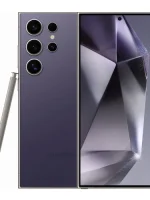
|
